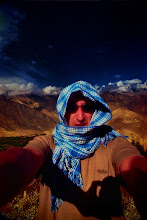Wednesday 5 October 2016
Larung Gar Nuns Urged by Monastic Leaders to Volunteer For Removal
From RFA
 Destruction at Larung Gar is shown in a September 2016 photo.Photo sent by an RFA listener
Destruction at Larung Gar is shown in a September 2016 photo.Photo sent by an RFA listenerFaced with Chinese demands to sharply reduce the population of Sichuan’s Larung Gar Buddhist Institute, monastic officials have offered nuns facing expulsion the chance to volunteer for removal, saying that those who step forward will be sent to places where they can continue their studies, sources in the region say.
Of the 2,000 nuns now ordered to leave the large study center located in Sichuan’s Serthar (in Chinese, Seda) county, 400 come originally from Golog (Guoluo) prefecture in neighboring Qinghai province, with 300 coming from Qinghai’s Yushul (Yulshul) prefecture and the rest from other areas near Sichuan, a local source said.
Speaking on Sept. 23, monastic officials at Larung Gar told nuns threatened with eviction that anyone registering their names for removal by Sept. 28 would be transferred to monastic institutions elsewhere in Serthar or in Sichuan's Nyagrong (Xinlong), Dege (Dege), or Draggo (Luhuo) counties, and that senior teachers would be sent there to look after them.
Anyone not volunteering for transfer would be understood to be at risk of forced removal by Chinese authorities, with no guarantee they would be permitted to resume their studies, monastic officials said.
That deadline has now passed, with no information immediately available regarding the number of those volunteering for removal.
However, at least 100 Larung Gar monks and nuns who had come originally from the Tibetan regional capital Lhasa or elsewhere in the Tibet Autonomous Region (TAR) were loaded onto buses on Sept. 29 and sent away, sources said.
Dwellings demolished
Many thousands of Tibetans and Han Chinese study at the sprawling Larung Gar complex, which was founded in 1980 by the late religious teacher Khenpo Jigme Phuntsok and is one of the world’s largest and most important centers for the study of Tibetan Buddhism.
The order now to reduce the number of Larung Gar’s residents by about half to a maximum level of 5,000 by Sept. 30 next year “comes from higher authorities,” with China’s president Xi Jinping taking a personal interest in the matter, sources told RFA in earlier reports.
Chinese work crews meanwhile continue to demolish monastic dwellings at Larung Gar, with 550 houses torn down between July 20 and Sept. 23, a source at Larung Gar with close knowledge of the situation said.
Local sources had said in earlier reports, now believed to be in error, that as many as 600 had been destroyed in the first week of demolition alone.
Rights groups have slammed the government-ordered destruction at Larung Gar, with New York-based Human Rights Watch (HRW) saying that Beijing should allow the Tibetan people to decide for themselves how best to practice their religion.
“If authorities somehow believe that the Larung Gar facilities are overcrowded, the answer is simple,” HRW China director Sophie Richardson said in a statement in June, when the plan to destroy large sections of the complex was first announced.
“Allow Tibetans and other Buddhists to build more monasteries.”
Reported by Lhuboom for RFA’s Tibetan Service. Translated by Dorjee Damdul. Written in English by Richard Finney.








